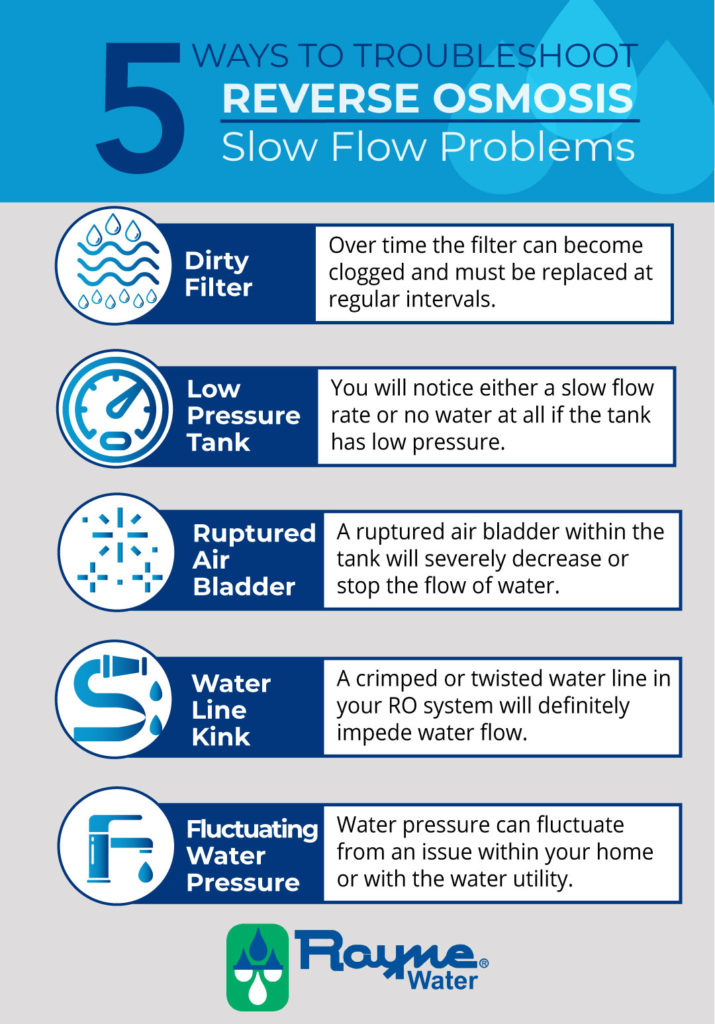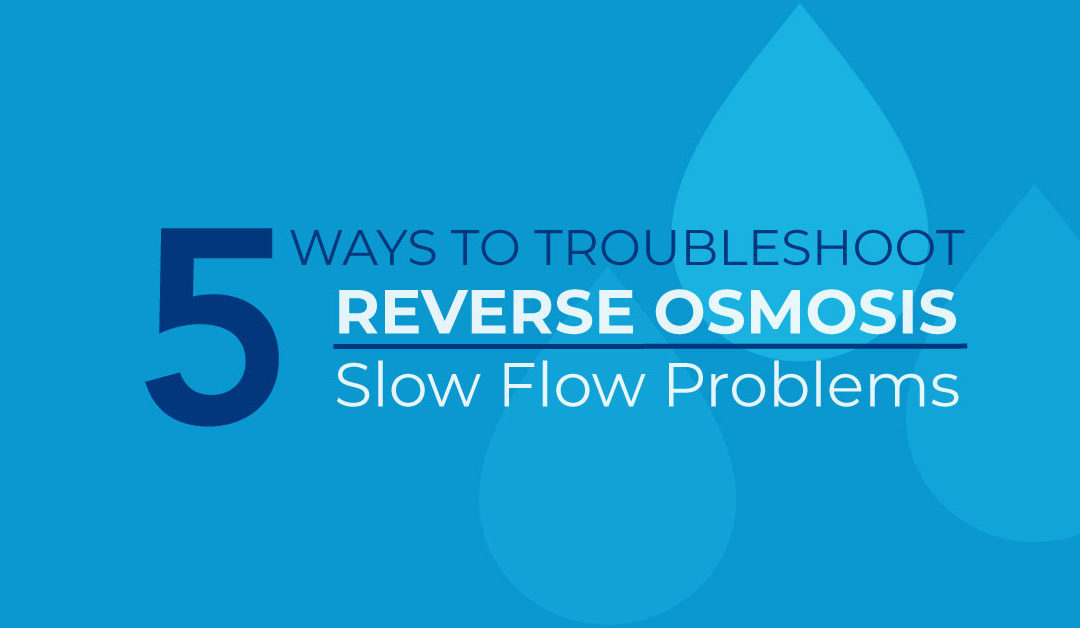 Imagine going to your kitchen sink and having to WAIT to get a nice, fresh glass of water – not because there’s a line of people at the sink, but because the water is just dripping out! While it may not happen very often, it could happen if your Reverse Osmosis system needs some servicing.
Imagine going to your kitchen sink and having to WAIT to get a nice, fresh glass of water – not because there’s a line of people at the sink, but because the water is just dripping out! While it may not happen very often, it could happen if your Reverse Osmosis system needs some servicing.
Troubleshooting Slow RO Flow Rates
Drinking water systems are a great way to ensure you have clean, safe, great tasting water, but they do need to be in working order to get the most benefit from them! If you notice that your RO system has a slow flow rate or no water at all, here are the most common things to look for:
 Dirty Filter – In order for your RO system to work properly, the filter must be replaced at regular intervals. Over time, it can become clogged with dirt or other particles, interfering with the flow of water. If you are unsure of the required maintenance schedule for your system, ask your local CalSoft technician.
Dirty Filter – In order for your RO system to work properly, the filter must be replaced at regular intervals. Over time, it can become clogged with dirt or other particles, interfering with the flow of water. If you are unsure of the required maintenance schedule for your system, ask your local CalSoft technician.
- Low Tank Pressure – Part of your RO system is a pressurized tank. Without any water in it, there should be a pressure of 7 – 8 psi. If it is less than that, you will notice either a slow flow rate or no water at all. With the right tools and gauges, pressure can be added to the tank, but it’s important to not add too much as that could accidentally rupture the air bladder within the tank.
- Ruptured Air Bladder – Whether due to improper maintenance, as described above, or some other reason, a ruptured air bladder will severely decrease or stop the flow of water from your RO system. This is one part that is not possible to repair – a replacement tank will be needed instead.
- Water Line Kink – Picture a kinked garden hose – a crimped or twisted water line in your Reverse Osmosis system will definitely impede water flow. A visual inspection of the system will often reveal the problem area and alert you to what needs to be fixed. The water supply valve should also be in the fully open position, so your inspection can confirm that at the same time.
- Fluctuating Water Pressure – Occasionally, water pressure can fluctuate, either due to an issue within your own home or due to something on a larger scale, like the local water utility temporarily running water at a lower pressure. Lower water pressure equates to slower flow rates from your RO system, so investigate and fix the cause of low water pressure if possible.
Professional RO Service
Most homeowners love the benefits of a home drinking water system – great tasting water right from the tap, no need for endless bottles of water that aren’t great for the environment anyway, and drinking water that is free from harmful contaminants. But, they’re not so inclined to want to do their own maintenance. That’s not a bad thing, since these systems are not easily serviced without the right tools and knowledge to do so.
If you’re not a do-it-yourself homeowner, don’t be afraid to ask for help with your RO system maintenance. While you may not fix any problems that arise yourself, there IS something you can do to aid in the maintenance process. Pay attention to changes in water flow from your RO system and let us know about anything else that looks amiss.
When you give us a call, we’ll make an appointment for one of our trained technicians to perform a thorough inspection. The information you provide will be an important part of our crew’s diagnostic process. Before you know it, your slow flow RO problems will be over and you’ll be back to the free-flowing, great tasting drinking water you’ve come to expect from your Reverse Osmosis system!

